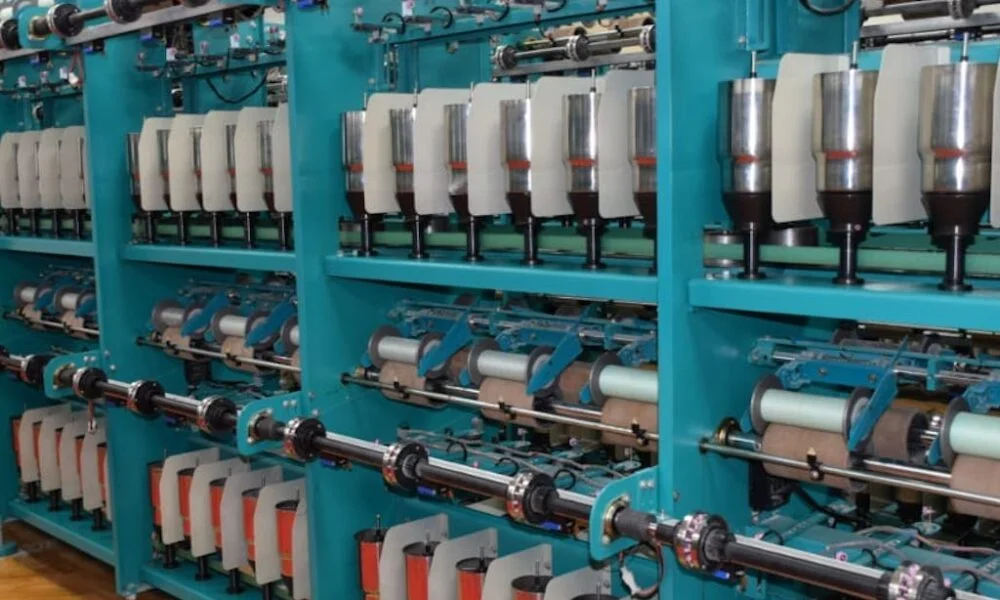In today’s rapidly evolving business landscape, micro-brands are emerging as powerful disruptors to traditional, large-scale industries. These small, agile businesses are carving out niche markets by offering personalized products, leveraging social media, and connecting directly with consumers. Their ability to thrive in industries once dominated by massive corporations is reshaping the way we think about consumer goods, from beauty and fashion to food and tech. In this article, we will explore why micro-brands are gaining ground and how they are driving a significant disruption in big industries.
What Makes Micro-Brands Different?
Micro-brands have found success by doing things differently than traditional brands. Here are some key aspects that set them apart:
1. Niche Focus
Unlike large corporations that cater to mass markets, micro-brands focus on targeting specific audiences with tailored products. By addressing unmet needs in niche markets, micro-brands can build a dedicated following. They understand that consumers are looking for products that speak to their unique preferences and values. This hyper-focus on a smaller demographic allows these brands to stand out, providing a more specialized and personal consumer experience.
2. Direct-to-Consumer (DTC) Model
The DTC model is one of the core strategies behind the rise of micro-brands. Traditionally, big brands relied on intermediaries like wholesalers and retailers to distribute their products. However, micro-brands bypass these traditional channels by selling directly to consumers through online platforms. This model offers several benefits, including cost savings, greater control over the customer experience, and the ability to create stronger relationships with customers.
3. Personalization and Customization
One of the standout features of micro-brands is their ability to offer personalized and customizable products. Whether it’s a skincare routine designed specifically for an individual’s skin type or a pair of shoes tailored to one’s style, micro-brands provide more options to personalize products. This creates a stronger emotional connection with the consumer, who feels valued and understood.
4. Agility and Flexibility
Micro-brands are typically smaller and more agile, which allows them to adapt quickly to market trends. They can experiment with new product designs, tweak their marketing strategies, or pivot their business model in response to customer feedback or emerging trends. This flexibility is a stark contrast to the slower-moving behemoths in traditional industries, which may take months or years to implement changes.
How Micro-Brands Are Disrupting Big Industries

Micro-brands are challenging industry giants across multiple sectors. Here are some of the key industries being disrupted:
1. Disrupting Consumer Goods
In the consumer goods sector, micro-brands are shifting focus from mass-market products to quality-driven offerings. Traditional brands that produce in bulk are being overshadowed by small-scale brands that prioritize craftsmanship, quality ingredients, and more personalized approaches to manufacturing. Micro-brands in skincare, tech gadgets, and home goods are thriving by tapping into customer desires for authenticity and transparency.
2. Impact on Fashion and Apparel
The fashion industry is one of the most significant sectors affected by micro-brands. With a growing consumer interest in sustainability and ethical practices, many consumers are turning to micro-brands that prioritize these values. Brands like Everlane and Reformation focus on eco-friendly materials, fair labor practices, and transparency in their supply chains, offering consumers an alternative to fast fashion. Additionally, social media platforms like Instagram have enabled micro-brands to build their followings directly, bypassing the need for traditional retail spaces.
3. Health and Wellness Industry
Micro-brands are making their mark in the health and wellness space by offering personalized solutions for fitness, nutrition, and wellness needs. From plant-based protein powders to customized fitness gear, these brands cater to consumers who are looking for niche products that meet specific health goals. Smaller brands can focus on product quality, ensuring that their offerings stand out against larger, mass-produced goods.
4. Food and Beverage Sector
In the food and beverage industry, micro-brands are winning over consumers with artisanal, local, and sustainable products. Many small food brands focus on local sourcing and small-batch production, offering unique flavors that big corporations cannot replicate. Whether it’s craft coffee, small-batch beer, or organic snacks, micro-brands are providing alternatives to mass-produced, processed foods, resonating with consumers who value quality and sustainability.
5. Tech and Electronics
Tech startups and micro-brands are disrupting the electronics industry by offering specialized products that meet specific consumer needs. For instance, companies that specialize in niche audio equipment, smart home gadgets, or wearable tech are gaining traction. These micro-brands often offer unique features, better design, or a more personalized user experience than their larger competitors, carving out their space in an otherwise crowded market.
The Role of Social Media and Digital Marketing
1. Creating Brand Awareness
Micro-brands rely heavily on social media to build brand awareness and attract customers. Platforms like Instagram, TikTok, and YouTube allow micro-brands to showcase their products, tell their story, and connect with potential buyers. The visual nature of these platforms makes them ideal for showcasing products in a more organic and authentic way.
2. Influencer and Community-Driven Marketing
Collaborating with micro-influencers who align with the brand’s values has become a go-to strategy for micro-brands. Unlike big corporations that often work with major celebrities, micro-brands tap into niche communities by partnering with influencers who have smaller, but highly engaged, followings. This approach drives community-driven marketing, where customers become brand advocates, sharing their experiences with others.
3. Cost-effective Advertising
Traditional advertising channels, such as TV or radio, are costly and often ineffective for small businesses. Micro-brands use targeted ads on platforms like Facebook, Instagram, and Google, allowing them to reach highly specific consumer segments at a fraction of the cost. Digital ads can be optimized based on real-time customer data, increasing conversion rates and maximizing ad spend.
Consumer Behavior Shift: Why Micro-Brands Are Gaining Popularity
1. The Demand for Authenticity
Today’s consumers value authenticity more than ever. They seek out brands that reflect their own values and that they feel they can trust. Micro-brands are uniquely positioned to meet this demand because they can communicate directly with customers and offer transparency in their processes. Whether it’s through storytelling or behind-the-scenes glimpses, micro-brands provide a level of intimacy that large corporations cannot replicate.
2. The Appeal of Exclusivity and Scarcity
The concept of scarcity and exclusivity plays a significant role in why consumers flock to micro-brands. By offering limited edition products or creating a sense of urgency with time-sensitive releases, micro-brands tap into the psychological drivers of demand. This makes consumers feel like they are part of an exclusive club, increasing the perceived value of the product.
3. The Shift Toward Sustainability
As more consumers become aware of the environmental and social impacts of their purchases, there is an increasing preference for sustainable and ethical products. Micro-brands are often more adaptable and willing to adopt sustainable practices, whether it’s using eco-friendly packaging or working with fair trade suppliers. This resonates with today’s conscious consumer, who is more willing to support smaller brands that align with their values.
How Micro-Brands Overcome Challenges
1. Limited Resources and Budgets
Micro-brands often operate with tight budgets, but they make up for it by leveraging cost-efficient tools and digital platforms. Crowdfunding platforms like Kickstarter and Indiegogo allow them to raise funds and validate their products before going to market. Additionally, these brands can use lean marketing strategies to maximize reach with limited resources.
2. Competition with Big Brands
While competing with industry giants can be daunting, micro-brands focus on differentiation and personalization to stand out. By honing in on a specific market segment, they create products that are more relevant to their target customers, building a loyal following that larger brands often overlook.
3. Scaling Up without Losing Brand Identity
As micro-brands grow, maintaining their core values is essential. To scale successfully, they must balance innovation with authenticity. This involves streamlining operations while keeping customer-centricity and brand integrity intact. Expanding into new markets or increasing production should never come at the expense of what made the brand special in the first place.
Case Studies of Micro-Brands Disrupting Industries
- Glossier has disrupted the beauty industry by creating a direct-to-consumer skincare and makeup brand that emphasizes customer feedback and community engagement.
- Warby Parker revolutionized the eyewear industry by offering stylish, affordable glasses online, eliminating the need for expensive retail markups.
- Allbirds has disrupted the footwear industry with sustainable, eco-friendly shoes made from merino wool and eucalyptus fibers.
- Casper challenged the traditional mattress industry by offering a convenient, online purchasing experience for high-quality, affordable mattresses.
The Future of Micro-Brands
Looking ahead, micro-brands are expected to continue evolving and disrupting industries. Here are some trends to watch:
- Hybrid Business Models: Micro-brands may combine traditional retail with e-commerce to further expand their reach.
- Technological Advancements: Tools like AI and 3D printing will help micro-brands scale efficiently without sacrificing quality.
- Increasing Consumer Power: Consumers will continue to influence brand decisions, as social media gives them a louder voice.
Conclusion
Micro-brands are proving that small can indeed be mighty. By focusing on niche markets, offering personalized products, and leveraging social media, these brands are transforming industries that were once dominated by large corporations. As consumer preferences shift toward authenticity, sustainability, and customization, micro-brands will continue to play a key role in shaping the future of commerce.

